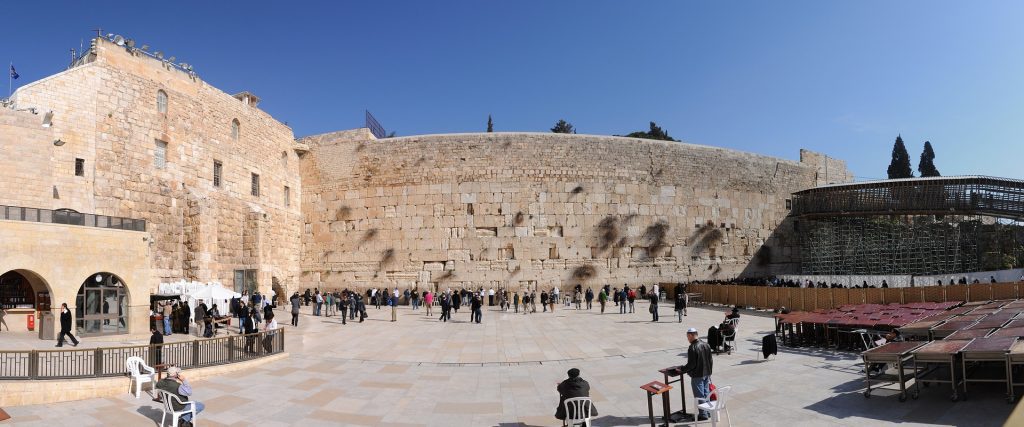The Wailing Wall, also known as the Western Wall, is one of the most important religious sites in the world. Located in the Old City of Jerusalem, this ancient wall is a place of pilgrimage for millions of people each year. Here are 12 fun facts about the Wailing Wall that you may not have known!
1. A Remnant of the Second Temple
The Wailing Wall is the only remaining part of the Second Temple, which was destroyed by the Romans, over 2000 years ago, in 70 CE during the siege of Jerusalem – a decisive event of the First Jewish–Roman War.
2. The Wall is Not Part of the Temple
Contrary to popular belief, the Wailing Wall is not actually part of the Temple, but rather a retaining wall that supported the Temple Mount.
3. The Wall is Divided
The Wailing Wall is divided into two sections, one for men and one for women, to accommodate traditional Jewish prayer practices.
4. Notes in the Wall
Visitors to the Wailing Wall often place notes with their prayers and wishes into the cracks of the ancient stones.
5. The Wall is Made of Limestone
The Wailing Wall is made of Jerusalem limestone and is over 65 feet high in some places.
6. The Wall is Not Always Open
The Wailing Wall is closed on certain Jewish holidays, including Yom Kippur and Tisha B’Av.
7. Visitors Can Touch the Wall
Visitors to the Wailing Wall are allowed to touch the ancient stones, but are asked to be respectful and modest.
8. A Site of Contention
The Wailing Wall has been the site of conflict between Israelis and Palestinians for many years.
9. The Wall is a Symbol of Jewish Resilience
Despite being destroyed and rebuilt numerous times over the centuries, the Wailing Wall remains a symbol of Jewish resilience and faith.
10. The Wall Has a Name in Arabic
In Arabic, the Wailing Wall is known as the Buraq Wall, after the winged creature that is said to have carried the Prophet Muhammad on a night journey.
11. The Wall Has Been Restored
Over the years, the Wailing Wall has undergone many restorations to preserve this important historical site for future generations.
12. The Wall Has Inspired Art
The Wailing Wall has inspired countless works of art, from paintings and sculptures to music and poetry.
FAQs about The Wailing Wall
Can anyone visit the Wailing Wall?
Yes, the Wailing Wall is open to visitors of all faiths and backgrounds.
What is the significance of the Wailing Wall?
The Wailing Wall is a place of great religious significance for Jews around the world, as it is the only remaining part of the Second Temple.
Why is it called the Wailing Wall?
The name 'Wailing Wall' comes from the Jewish tradition of lamenting the destruction of the Second Temple, which is believed to have taken place at this site.
Further reading:
https://facts.uk/tag/israel/
https://www.touristisrael.com/western-wall/15946/
https://www.myjewishlearning.com/article/what-is-the-western-wall/
Do you know any interesting facts about the Wailing Wall? Share them in the comments below!
